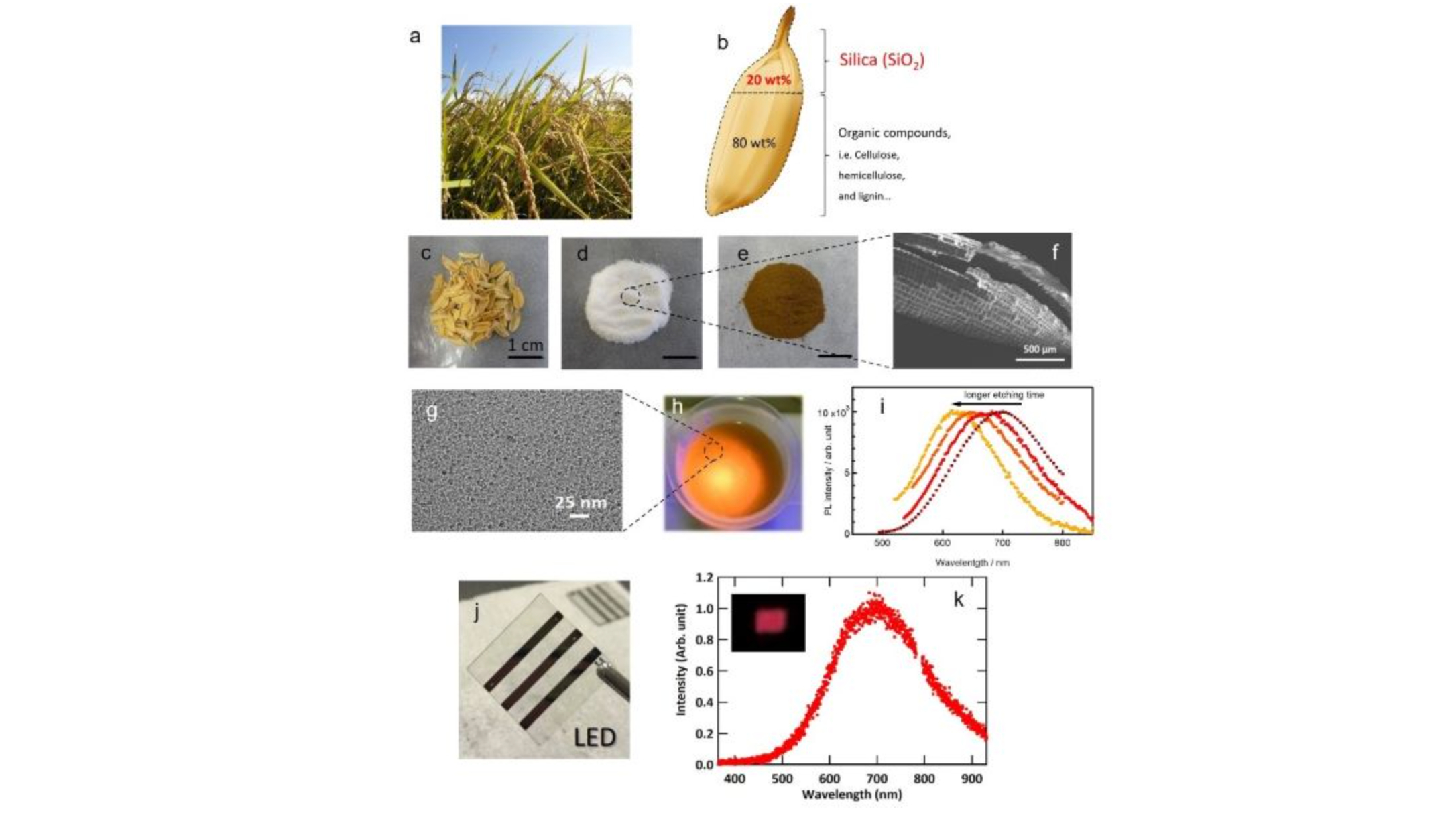Future TVs may feature Quantum Dots made from rice
Scientists have developed a way to create Quantum Dot LEDs from rice husks

Scientists at Hiroshima University in Japan have managed to develop a process which could minimise toxic materials used in producing Quantum Dot (QD) LEDs. The research team, based at the Natural Science Center for Basic Research and Development, has potentially found a way to put the 100 million tonnes of global rice husk waste created annually to good use – within our QD-OLED television screens.
Essentially, the team found a way to recycle these rice husks (a by-product of milling rice to separate the grain from the shell) to create the first silicon quantum dot (QD) LED light. The University claims this finding could soon transform the husks – and potentially other agricultural waste – into state-of-the-art light-emitting diodes in a low-cost, environmentally friendly way.
"Since typical QDs often involve toxic material, such as cadmium, lead, or other heavy metals, environmental concerns have been frequently deliberated when using nanomaterials," said Ken-ichi Saitow, lead study author and a chemistry professor at Hiroshima University, to Tech Xplore, adding, "Our proposed process and fabrication method for QDs minimises these concerns."

As noted by Tom's Hardware, the rice husks can seemingly be processed (by burning off the organic compounds, grinding and heating the leftover silica powder, using chemical etching to reduce the powder to 3nmn particles, then adding organic solvent to facilitate 3nm crystalline particle liquid) into good source of porous silicon.
Once the processes are complete, scientists are left with metal-free, Silicon Quantum Dots (SiQDs) that "luminesce in the orange-red range with high luminescence efficiency of over 20%".
With more devices than ever now including LED displays, this non-toxic material has a wide variety of possible applications – and regular readers will know that when done well, quantum dot and newer QD-OLED TVs have the potential to offer some of the crispest and most detailed pictures on the market.
So when will these processed rice husks find their way into our TV screens? As with any momentous and cutting-edge technological discovery, there is still work to be done before any inclusion in mass production. The team says it is now going to explore the possibility of using agricultural waste from other silicon-rich crops such as wheat, sugar cane bamboo, barley, or grasses, because the SiQDs derived from these crops may naturally have different luminescence characteristics.
The latest hi-fi, home cinema and tech news, reviews, buying advice and deals, direct to your inbox.
For now, we wait...
MORE:
At Samsung, a rollable QD-OLED TV could be on the way
See our pick of the best TVs 2022: brilliant budget to premium 4K Ultra HD TVs
Looking to buy now? See the best TV deals 2022: 4K, QLED, HDR, OLED
Becky has been a full-time staff writer at What Hi-Fi? since March 2019. Prior to gaining her MA in Journalism in 2018, she freelanced as an arts critic alongside a 20-year career as a professional dancer and aerialist – any love of dance is of course tethered to a love of music. Becky has previously contributed to Stuff, FourFourTwo, This is Cabaret and The Stage. When not writing, she dances, spins in the air, drinks coffee, watches football or surfs in Cornwall with her other half – a football writer whose talent knows no bounds.
